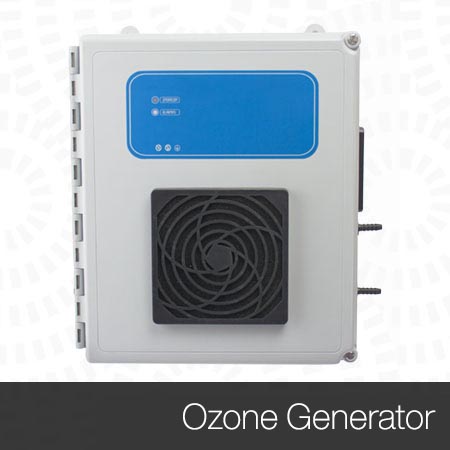
What is ozone?
Ozone (O3) is a gas that occurs naturally in the atmosphere, and is characterized by being highly oxidizing. This property can make it an excellent disinfectant: you just have to handle it with caution.
Is ozone dangerous?
It is important to note that exposure to high concentrations of ozone can be dangerous, so there are regulations that limit exposure to humans. NOM-020-SSA1-2014, which deals with the quality of the permissible value for the concentration of O3establishes as a permissible limit a concentration equal to or less than 0.070 ppm, in a continuously inhabited site, in a continuously inhabited site, without exceeding a period of eight hours. Other references, such as the National Ambient Air Quality Standard (NAAQS), or the Environmental Protection Agency (EPA), allow up to 0.12 ppm, not exceeding a period of one hour. .
Do you need a quote? Request it here: (33)38340906
How is ozone generated?
Ozone is unstable at high concentrations, and under environmental conditions it degrades easily; Thus, it is not feasible to store it. The equipment currently on the market generates it at the point of use. This can be produced by photochemical, electrolytic and radioactive methods. The most common method is corona discharge. This method consists of passing a flow of oxygen through two electrodes, to which a high voltage is applied. As the diatomic oxygen molecules (O2) through the electric field, the bond is broken and highly reactive oxygen monatomic molecules (O ·) are formed; finally, these react with each other to form triatomic oxygen molecules, better known as ozone (O3).
How does ozone disinfect the environment?
As mentioned above, the reason ozone disinfects is because it is highly oxidizing. Which means that it is in constant search of electrons that it will take from any compound with which it comes into contact. In other words, it reacts with any material until it decomposes. When larger organisms have only suffered a low level of oxidation, microorganisms, such as viruses, bacteria and fungi, have been destroyed. It also enters unreachable areas for common disinfectants, such as cracks, small openings and hard-to-reach areas of buildings, that is, because ozone being a gas can enter any area even when it is very narrow.
In a closed space where people live, microorganisms can be present on surfaces (including clothing, skin and mucous membranes) and in the air. In the latter, they are found both in the mist that forms saliva, and in suspended particles (such as dust and smoke). Ozone acts on all of them.
How can it be disinfected with ozone?
Commercial ozone generators for home use are designed to produce small doses. Additionally, they are programmed with a timer that turns the equipment on and off for the times necessary to not exceed the maximum allowable concentration according to the volume of the room.
It is important to bear in mind that, if a more rigorous disinfection is needed, it is necessary that in the rooms where the domestic ozone equipment will be put to work for a certain time (it can be 45 minutes with 15 minutes rest for a total of 2 hours), there are no people present for at least 10 minutes after the equipment finishes working. This is, in order that the room is disinfected in its entirety, and there is no presence of viruses and bacteria. Once the time of constant work by the ozone equipment at a high concentration (for example 0.4 g / h) is over, it is necessary to give ventilation to the room to avoid any concentration of the same that could prevail, and thus avoid harm to people to occupy that room.
What is ozone for?
It is the disinfectant used for the sterilization of hospital rooms and public areas. Professional personnel, with proper protective equipment, use high concentrations of ozone to eliminate viruses and bacteria that could be found in specific areas. These large quantities completely sterilize the rooms and public areas so that there is no risk of infection to the people who will occupy those areas.
When disinfecting with Ozone, what pollutants are removed?
Viruses and bacteria are a matter of concern today, and it is necessary to look for alternatives to keep our homes and work areas clean and safe.
Ozone very easily eliminates microorganisms, acts on them destroying the protective layer that retains genetic information. These protective layers are composed, mostly, by proteins, which the O3 it easily destroys due to its oxidizing activity, thus leaving genetic information unprotected, which means that the virus or bacteria dies and does not reproduce again.
There is much information about what types of microorganisms ozone destroys easily, among the most prominent are the Poliovirus, Phage, Rotavirus, Hepatitis A, and any virus that contains a layer of proteins (such as the Coronavirus family). Ozone concentrations to eliminate viruses are between 39 mg to 49 mg in periods of 40 minutes. This means that, for ozone, it is very easy to eliminate these microorganisms.
There is currently no scientific evidence on whether ozone can eliminate the virus COVID-19 (SARS-CoV-2), but based on the information available on the ozone history against SARS-CoV-1, it can be a strong ally for the elimination of this virus.
In addition to its disinfecting function, the O3 It reacts with molecules that present unpleasant odors, so it also deodorizes.
For all the above, an environmental ozone generator finds application in the home, commerce, public spaces, hospitals, offices and in industry.
Before acquiring the equipment, the following should be considered: the volume of the space in which you want to install it, the type of use of it (domestic, commercial, industrial, etc.) and the time that it remains inhabited.
Ozone equipment price.
Request a quote for the ozone generator for your home, office or business: (33)38340906
Or write us to the mail: [email protected]
References.
Grandson, Antonio. Ozone for Environmental Purification. HVACR world. [Online] HVACR World, 2009. https://www.mundohvacr.com.mx/2009/08/ozono-para-la-purificacion-ambiental/
Cosemar Ozone. Environmental disinfection and elimination of bad odors. [Online] CosemarOzono. https://www.cosemarozono.com/soluciones/desinfeccion-ambiental/
asepsis asp. (2020). Obtained from https://www.aspozono.es/coronavirus-desinfeccion-con-ozono.asp
Caño, G. d. (May 05, 2020). Health without hoaxes. Obtained from What is ozone and why is it used as a disinfectant ?: https://saludsinbulos.com/observatorio/ozono-desinfectante-covid19-biocida/
Hudson B., J., & Sharma, M. (2009). Development of a Practical Method for Using Ozone Gas as a Virus Decontaminating Agent. The Journal of the International Ozone Association, 216-223
Loynes, C. (May 12, 2020). Aeroqual. Retrieved from Does ozone sterilization kill the Coronavirus which causes COVID-19 ?: https://www.aeroqual.com/does-ozone-kill-coronavirus-covid-19
Nieto, A. (2018). HVACR world. Obtained from Air Conditioning Industry Sectors: https://www.mundohvacr.com.mx/2009/08/ozono-para-la-purificacion-ambiental/
Thailand Medical News. (2020). Ozone Can Be Used To Destroy The New Coronavirus And Disinfect Areas. Obtained from https://www.thailandmedical.news/news/ozone-can-be-used-to-destroy-the-new-coronavirus-and-disinfect-areas
Comparte:
Necesitas más información, escríbenos.
Algunos productos que te pueden interesar
-
89 Canature Hydrotech control valve
Add to quote -
Elkay EZH2O DSSBF8S Elkay EZH2O DSSBF8S Pedestal Cold Water Dispenser with Bottle Filler
Add to quote -
Canature Hydrotech 105 Control Valve
Add to quote -
RoClean L211 cleaning of membranes with organic matter fouling
Add to quote -
Canature Hydrotech 765 Control Valve
Add to quote -
RoQuest 3000 Organic Liquid Coagulant from Avista
Add to quote -
AA-3 Activated carbon to reduce color and flavor in tequila and other distilled spirits
Add to quote -
Canature Hydrotech 565 control valve
Add to quote





















